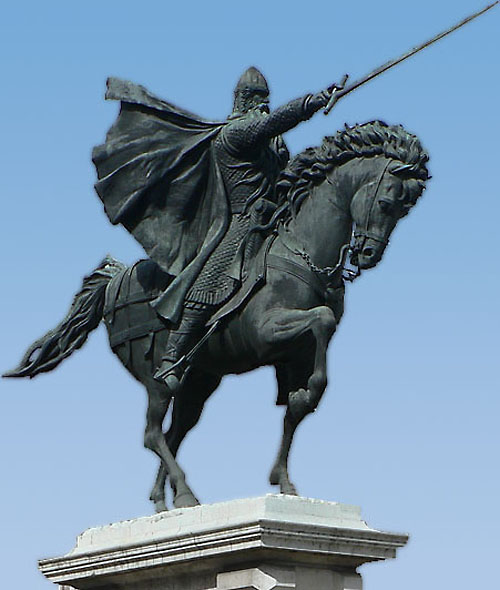by Thomas O’Dwyer

¡Buen Dios! Is it already 60 years since they filmed The Cid? A couple of weeks ago, I caught it again on Amazon Prime. All I remembered of first seeing it decades ago was the white-clad Cid thundering along Valencia beach, riding through the gates of history and into eternity, propped up dead on his beloved warhorse Babieca. Like a visit to a childhood home, the image proved to be grander in memory than in the rediscovered reality. Most of us ageing romantics prefer dreamy time-fixed images to duller realities. However, Anthony Mann’s cliche-soaked Tinseltown love story squeezed into medieval costume had first set me reflecting on the relationship between the visual and the verbal in our engagement with literature.
The noble Cid leading his warriors to battle even in death stuck at once in my mind as typical of elusive long-dead virtues I had been struggling to understand in the Greek and Latin texts pounded into our unwilling secondary-school heads. He had the virtutas of Aeneas, the arete of Achilles. I had seen the film of the Cid long before I came across The Poem of the Cid, translated from its 12th century Spanish and, though the two had little in common, the images I carried from the film lent some familiarity to the ancient tale. Likewise, I had less trouble with Virgil’s Aeneid because I had absorbed powerful images of the epic from, believe it or not, an English comic book. The weekly Eagle used to run stories from the classics in garish comic strips across its back page. It featured a vividly illustrated White Eagles Over Serbia, by Lawrence Durrell, for instance. I never got around to reading that book, but later read everything else Durrell wrote. Read more »
